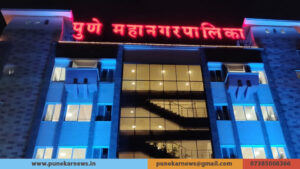Low Awareness about Diabetic Macular Edema among Punekars
Dr. Nitin Prabhudesai, Ophthalmologist & Eye Surgeon, Prabhudesai Eye Clinic, Pune said, “Despite having nearly 400 practicing Ophthalmologists in Pune, patients reach the doctors’ clinic for consultation, only at an advanced stage of eye related diseases, specifically retinal diseases. This reflects the huge gap which exists in terms of patient awareness and diagnosis. Lack of awareness about retinal diseases leads to late diagnosis of the disease. Retinal diseases like Diabetic Macular Edema (DME) is chronic but manageable with effective treatment, if patients are diagnosed at an early stage.”
Understanding Diabetic Macular Edema
As per national statistics, there are 6 crore diabetics in India and 1 out of 3 diabetic patients develop DME. This happens when damaged blood vessels leak in the macula causing it to swell and affecting the center vision. People suffering from diabetes have 25 times more risk of losing vision compared to the rest of the population. The condition affects patients in their productive years of life, impacting them socially, economically and emotionally.
Preventive measures for diabetics
Ø Patients suffering with diabetes should visit the Ophthalmologist every 6 months and not miss scheduled appointments
Ø Patients should be alert and aware of DME symptoms and visit
the specialist immediately if they experience any change in vision
Ø Adhere to the treatment protocol as advised by your doctor
Ø Regularly monitor your sugar levels to effectively manage
diabetes
Ø If you smoke, consult your doctor about a cessation program and work towards quitting
Ø Maintain a healthy body weight and maintain a balanced diet
Ø Exercise regularly to avoid high blood pressure and elevated cholesterol
Common signs and symptoms of retinal diseases:
· Blurred or fuzzy or distorted vision
· Impaired colour vision
· Decreased contrast or colour sensitivity
· Experiencing dark spots in vision
· Straight lines that appear wavy or crooked
· Difficulty seeing at a distance
Vision loss[10]
Timely diagnosis
Patients need to be alert in recognizing early signs and symptoms of retinal diseases. They can use the Amsler Grid to monitor their central vision at home regularly, a simple table with a dark dot in the center. Notice if any of the lines appear distorted or broken and if there are blurred areas. Though this test is helpful, one should not skip visiting an expert for proper eye screening. Early detection of DME increases the possibility of preventing vision loss.[12].
Treatment Protocol
Today, there are treatment options available that can slow down disease progression. Some of the treatment options available in India include laser photocoagulation, Anti-VEGF (Vascular Endothelial Growth Factor) injections and combination therapy. Anti-VEGF treatment works by stopping action of extra VEGF present in your eyes due to the condition.[13]





